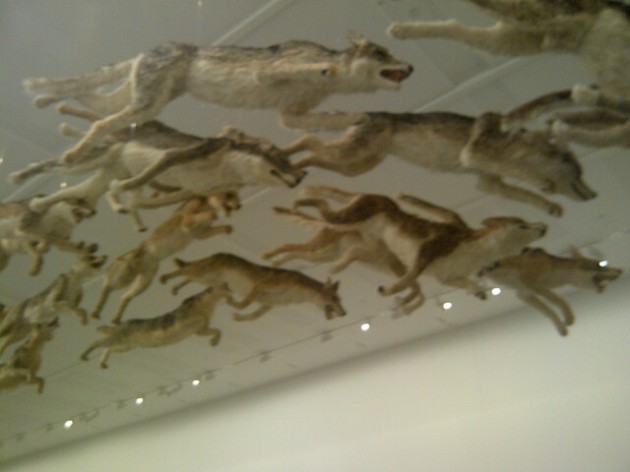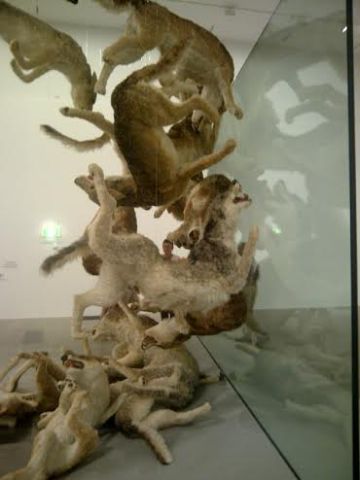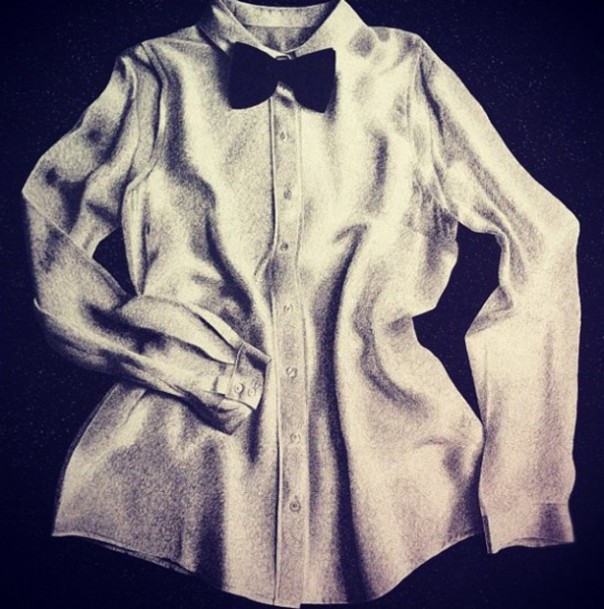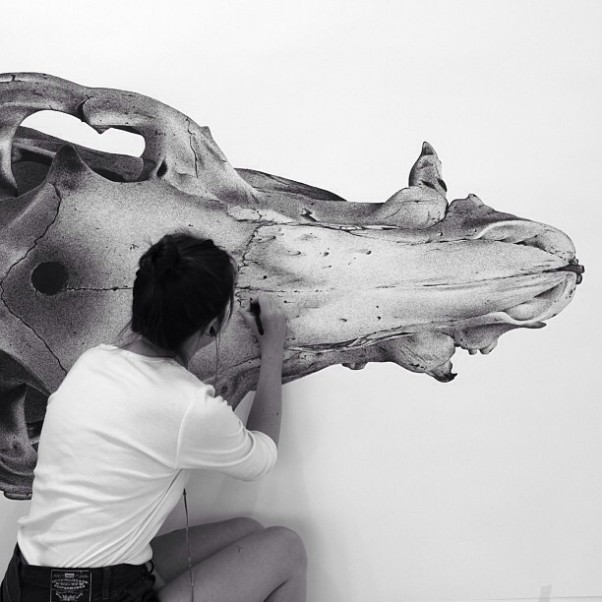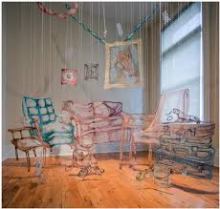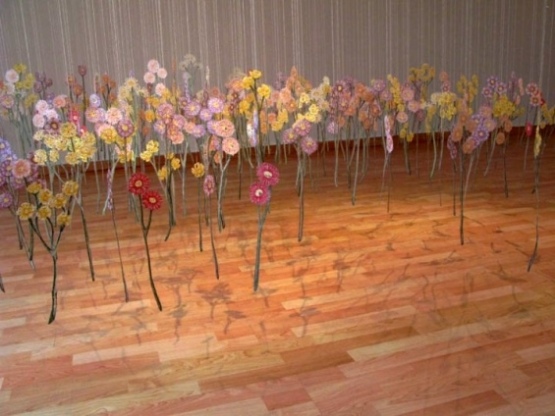Thank you Megan Morton
November 23, 2015
“Successful styling is when you make the viewer forget the name of the thing they are seeing.” Sophie The, Stylist.
This year has been a very tumultuous one for me, both personally and professionally. As a result, I’ve been doing a lot of reflection and soul searching to help me map out a path for my future (waaahhh…first world problems and all that). Some time ago, I had the opportunity to hear Megan Morton speak at a DIA (Design Institute of Australia) breakfast, and was so inspired by what she had to say that when my career veered off course and the opportunity arose to attend The Science of Styling workshop at The School I didn’t hesitate.
I wasn’t sure going in to this workshop that I wanted to be a Stylist and I’m still not sure if this is the field for me, however the experience of the day and in particular the quote from Stylist, Sophie The (above) has continued to resonate with me long after the conclusion of the workshop, as this statement is how I want to approach every space that I now design or decorate.
As an interior designer, I’ve been trained to apply the elements and principles of design in both two and three dimensional spaces to create visually balanced layouts, as well as how to plan and position furniture and fixtures in a room so that those who will be using it will be able to move freely. There’s also a strong emphasis on what can and can’t be done from an ergonomics, construction and regulations point of view when working in the interior design industry (+ documentation…lots and lots of documentation).
Until I undertook Megan’s workshop I didn’t fully appreciate that the training I’d received (and have been applying to my work) was really just the ‘tip of the iceberg’ when it comes to designing and decorating an interior space. What Megan showed me was a different way of seeing, not just in interiors but everything that I encounter every day. I now feel like I’m seeing everything completely differently. My appreciation of the world around me has shifted and I love it!
As homework we were encouraged to choose 5 images from our Pinterest pages. These five images needed to be images that we have a strong connection to. The next step was to identify the thread that ties these images together. My five images are below:

The common threads flowing through these images are a strong sense of nostalgia, innocence, muted colours, sheer textures, fluid lines, shapes and movement as well as beauty that is immured. There’s also a strong feeling of sadness or loss and a connection to the past or perhaps to things that are no more.
When I thought a little more deeply about these images, I realised that the connection is my Grandmother. She was hugely influential throughout my life from the time I was born. She’s now passed, but her influence over the way I feel and interact with the world around me is still very present. She was obsessed with spirits and ghosts and talked about the past frequently, and loved to share stories of people and places from her past. Of course when we reflect back upon our lives, our memories are never linear they meander and wander. They are also very subjective and we may all remember a shared event very differently, based upon our experiences, emotions, age etc. and so the stories that she recalled were as she remembered them (or as she wanted to remember them) and these memories somehow were imprinted on me. As I now remember them though may not actually be as they were, they’re simply my interpretation of events (there’s a wonderful novel by Clive James called ‘Unreliable Memoirs’ and to me this book title sums up perfectly how we remember the world around us). This understanding of ‘what makes me tick’ has been so helpful to me in developing an appreciation of how I see the world around me and how I like to be within it. It explains so much.
You’re probably asking, ‘how on earth does this revelation apply to anything interior design-related?’ The answer is this technique can be used to gain a deeper understanding of your client’s needs. For example, if I was your client and we had a chat and I told you that I’d like you to create a space that’s relaxed, low maintenance and uncluttered (which I would) and you designed a space for me that was colourful with lots of geometric shapes and clean lines I wouldn’t connect with that space at all (and I might not fully understand or be able to explain why this is the case). That’s because you only had part of the story to work with. The information contained in those five images is very powerful and can help you design an interior space that your clients really connect with. How you choose to obtain the information contained in those images from your client is completely up to you, but it can elevate your designs from good into something great – it can make your viewer overlook the parts of what you’re showing them and help them to experience and ‘become one’ with the whole.
Thank you Megan Morton.
This is something that I’m asked a lot by students and graduates. My answer would be that it’s definitely worth considering doing this, as it can be hugely beneficial for all parties. You just need to exercise some caution with how you choose to approach it. Work experience can be a great learning tool and it can give you a competitive edge if it’s conducted in the right manner with the right people, however there is always a risk that your time and skills can be exploited.
I’d recommend to only volunteer your work and time for free for a reputable company or interior designer, so make sure that you do your homework before approaching a design firm or interior designer. If possible, the best option is to work as an intern. Designers who offer a formal internship program often are the best way to go because the role, expectations and outcomes are structured and everyone is on the same page at to what and how everything is going to happen up front.
When you’ve found a design firm whose design ethos is compatible with yours, the next step is to make phone contact to determine whether they have any work experience positions available. This is your opportunity to find out who you should be speaking with in relation to this and who you need to forward your resume and portfolio to for review. From your homework, you should have gained a very clear picture of the type of employees that they hire and the types of skills and abilities that they seek, which means you can work towards tailoring your resume and portfolio to suit (it’s not ok to have a ‘one size fits all’ resume). I’d also recommend that if you don’t have a resume and portfolio ready to go then wait until you do before you make contact. Once you’ve forwarded your resume and portfolio through, if you haven’t heard from anyone within a week, then give them a follow up call to make sure that everything was received and whether they had any questions. Let them know that you’d be keen to meet with them to answer any questions that they might have or to discuss any points further. Hopefully, they’re eager too and would like to meet with you and if not, this is where you thank them for their time (you should also ask for any feedback or areas for improvement in relation to your resume, skills, and/or portfolio of work). If you’re successful in having an opportunity to meet with the design firm then treat it like a job interview for a paid position. The old adage ‘you never get a second chance to make a first impression’ is very true. If you don’t progress to interview then don’t be disheartened, take on board any feedback you’ve received, apply it and you can then be better prepared for next time.
If I’m unhappy with a work experience position, do I have to stay?
If this position is not what you expected it to be and you’re being treated badly, or not learning and developing your skills as a designer then of course you don’t have to stay. I’d recommend though that you make a time to sit down and discuss with the company how they feel that you’re progressing, and what their ongoing plan is for you. You can also politely and professionally let them know what your concerns are. If you can’t come to a mutual agreement, then it may be best at this point to go your separate ways. If possible, always try to create a work experience agreement in writing before you start and get all parties to sign it, so that it’s clear what you’ll be doing day to day or week to week and it’s also documented. Something to always agree upon upfront it how many days and hours you’re going to be working and how long this will continue for. For example, will your work experience continue for 1 week, 1 month or 1 year? Personally, I feel that anything less than a month is really not worthwhile as it doesn’t give you ample time to really learn.
Should I do some freelance work for free to gain some experience, and so I can add it to my portfolio?
This is a question that I’m often asked, and my advice (although controversial) would always be ‘no’. The reason that I say this is because when you perform work for a client without charge I believe you’re inadvertently devaluing the work that you and other interior designers perform. I once performed freelance work at no charge and at the completion of the job (which was hugely complicated and time consuming) I wasn’t even provided with as much as a ‘thank you’. The fact that I hadn’t placed any value on what I was providing meant that they didn’t either. If you’re keen to undertake freelance work at no charge then it’s probably best to do it for your own home or project.
I’m keen to hear your thoughts and experiences on this topic too.
Please note: the advice and views in this piece are based upon my experiences within the design industry and they should not substitute for any professional advice that you may have already received.
Kira & Kira are based on the Gold Coast and they are makers of beautiful, affordable, handcrafted furniture.
Their beautiful pieces are set to be featured on the upcoming season of The Block, so you can expect to see a lot more of them very soon!
Please see some images below and for more images and information have a look at http://www.kiraandkira.com.au/ or follow http://instagram.com/kiraandkira
Sometimes it’s not that easy being green
May 20, 2014
Sustainable design has been a bit of a buzz term for quite a few years now, and suppliers readily promote products and materials as being sustainable, but what does it mean? The definition that explains it best is taken from ‘Our Common Future’ and it suggests that the essence of sustainable design is design that meets “the needs of the present without compromising the ability of future generations to meet their own needs” (World Commission on Environment and Development Sustainability, 1987).
There are now many brands that promote their products as sustainable, however it’s important to do your research and consider the ‘life cycle’ of the product in question. For example, just because something comes from a readily renewable resource or is able to be recycled doesn’t necessarily mean that it should be classed as sustainable. Ask yourself, what is the original source of the material/s that this product is comprised of, over what distance has it been shipped, what manufacturing processes has it gone through, how is it assembled on-site (are potentially hazardous chemicals used?), when it’s installed is the product emitting any harmful chemicals into your living environment, what’s the expected lifespan of the product and what happens to it at the end of it’s life?
It’s also important to consider the impact that the product may have not only on our physical environment, but also on our health and the health of others (such as those who manufacture and/or install the products), as certain materials may cause illness and injury that can have significant impacts on our health system into the future. Something that on the surface may appear to be a ‘green’ product may in fact not be when we delve a little deeper in to the ‘life’ of that product.
If you’re not sure there is information out there that’s available from websites such as www.geca.org.au/ and directory.yourfuturehome.com.au.
What does a successful interior designer look like?
February 4, 2014
One of the questions I hear most from students is ‘how to you become a successful interior designer?’
This is one hell of a difficult question to answer and to be honest there’s no one answer that completely addresses the question. Often the ‘best’ or most successful designers are not necessarily the people who are able to skillfully use CAD software, nor are they always the most creative they are often just the best listeners.
1) Remember your client
When we get a new project to work on, it’s very easy to get swept up in creating an amazing design using a variety of colours, textures and finishes that we love, but we need to remember that our client is not paying us to create something that we love. They’re paying us to create something that they love. If your client doesn’t love your design and can’t visualise it working for them, then we’ve missed the mark.
As people, we have a tendency to like to talk about ourselves, and what we like and dislike to get our point across and feel heard – your client feels the same way. As designers it’s important for us to ask questions and listen so that we can determine what it is that our client wants and/or needs. Your client wants to feel that they have been heard, and that we have taken their feelings and concerns into the development of our design concepts. A client who feels as though their voice has been left out of the design process is more than likely going to pass on your design.
2) Welcome the word ‘no’
None of us like hearing the word ‘no’, especially when we’re passionately wanting to hear the word ‘yes’. As Interior Designers, our clients and employers may not always agree with every suggestion that we make, and that’s ok. Don’t become defensive and take it as a personal attack on your talent or abilities (remember it’s not about you), but try to see it as an opportunity to negotiate and refine your design, and develop something different and maybe even better.
3) Stay Creative
The way I approach any project is to find a source of inspiration, and I never find inspiration from looking at other interior projects or designs or even furniture or accessories. I find it in artworks or nature and then translate elements or aspects into my design. Of course every designer is different, but it’s so important for us to exercise/practise our creativity so that we can stay ahead of the game and begin to view things differently. That’s what people pay us for. If we see everything the same way that everyone else does then why would anyone pay for a designer?
There are a lot of different creative thinking activities and exercises that we can use. Something that I love is the book ‘Caffeine for the Creative Mind: 250 Exercises to Wake Up Your Brain’ by Stefan Mumaw and Wendy Lee Oldfield.
There’s a lot more to being an Interior Designer than meets the eye and there’s not one hard and fast way to succeed at it. It’s important to love what you do and have a natural talent for it, but the rest is really just hard work 🙂
#Art I Love
January 6, 2014
The works of Cai Guo-Qiang are spectacular in both scale and impact. This may be due, in part to his background in stage design. Cai’s works are currently on display at the Gallery of Modern Art (GOMA) in an exhibition entitled Falling Back to Earth, and features 4 installation pieces.
The installation below is entitled, Heritage and it’s an artwork inspired by the Queensland landscape. I was at first, disturbed by this piece as (although it is evocative and beautiful) I was afraid it featured actual taxidermied animals, and I wondered whether the animals had been ethically sourced. I then discovered that each of the animals were replicas (99 in total), all thoughtfully and painstakingly created and positioned by the artist. I was then completely awestruck, as he has managed to bring a unique and individual personality to each animal. I was also amazed that even though it is a grand piece in size and scale, it somehow fills the viewer with a strong sense of peace and calm.
I then saw, Head On (below) which again features 99 replica animals. Each and every wolf in this piece has a frenetic energy and emotion, and they’re positioned in such a way that creates a sense of urgency and motion in the viewer. It was the stand-out piece for me!
Finally came Eucalyptus (below), which is an iconic symbol of the Australian landscape. It’s tough and resilient, like the environment it comes from and it’s displayed in such a way that we were able to move through, under and around it so that you really feel a part of it’s majesty. This also enables us to fully appreciate it’s scale and natural beauty.
This is a must see exhibition.
#Art I love…
December 11, 2013
Hand-stitched typography
#Art I Love…
December 10, 2013
I had the pleasure of meeting Brisbane-based photo realist artist today, and as you can see below her works are incredible!! Perhaps most amazingly they’re all created using fine liner pens, which are built layer by painstaking layer.
All pieces feature a colour palette of black and white only, so that you don’t get distracted by the use of colour and can really focus on the work. By far, my favourite artworks in her collection are those featuring skeletons and skulls (below) – they are just full of natural beauty and their form really lends themselves to being reproduced in a black and white colour scheme.
You can also follow cj on Instagram – cj on instagram.com/cj_hendry
#Art I Love
December 4, 2013
Amanda McCavour is an artist who uses a sewing machine to create thread drawings and installations by sewing into fabric that dissolves in water, and the results are the amazing and unique pieces of sculptural art that you’ll see below….incredible!
(Come Up to My Room)
(Stand in for Home)
(Floating Garden)
(Super-spiro-scribble Density Test)





